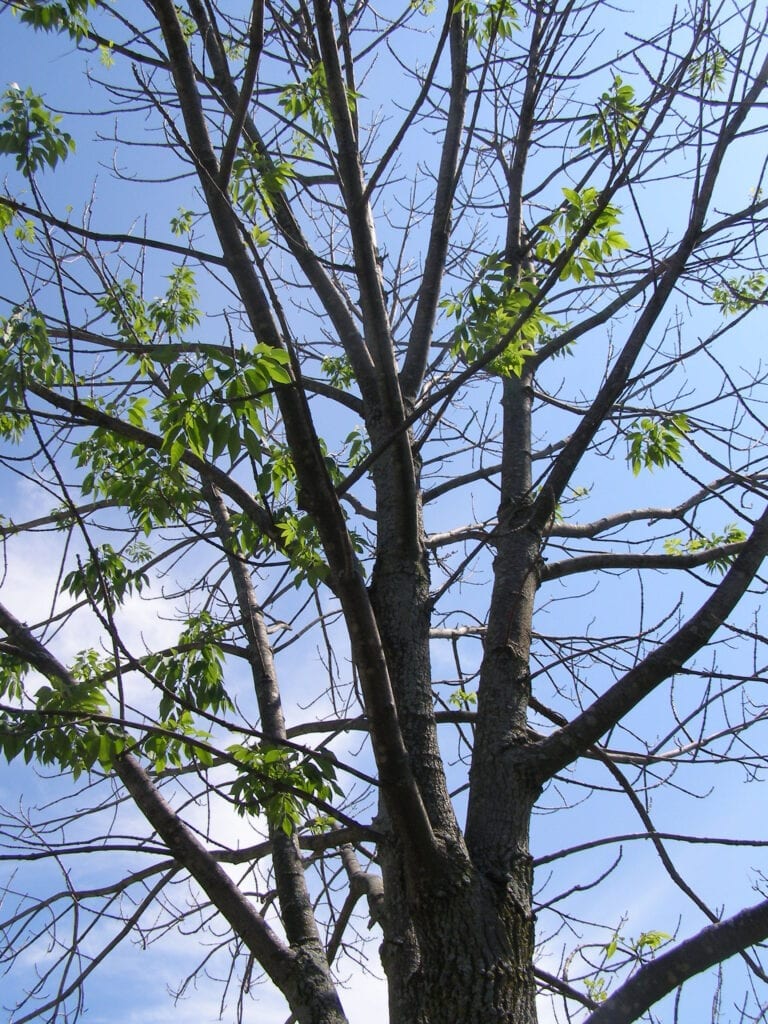New info on the EAB (Emerald Ash Borer) as of Jan. 2011
Coalition for Urban Ash Tree Conservation
– Emerald Ash Borer Management Statement –
www.emeraldashborer.info/files/conserve_ash.pdf
signed 06 Jan 2011
We the undersigned strongly endorse ash tree conservation as a fundamental component of integrated programs to manage emerald ash borer (EAB) in residential and municipal landscapes. Cost-effective, environmentally sound EAB treatment protocols are now available that can preserve ash trees through peak EAB outbreaks with healthy canopy intact. Used in association with tree inventories and strategic removal / replacement of unhealthy ash, tree conservation will help retain maximum integrity and value of urban forests. This integrated approach to urban EAB management is supported by university scientists with expertise in EAB management, commercial arborists, municipal foresters, public works officials, and non-governmental organizations (NGOs).
Emerald ash borer has killed millions of ash trees since its discovery in 2002 and the number of dead ash is increasing rapidly. Ash species are abundant in planted and natural areas of urban forests, representing 10 – 40% of the canopy cover in many communities.
Ash trees provide substantial economic and ecosystem benefits to taxpayers, ranging from increased property value, to storm water mitigation, to decreased energy demands (http://www.coloradotrees.org/benefits.htm).
Consequently, widespread ash mortality in urban forests and residential landscapes is having devastating economic and environmental impacts. Indeed, EAB is predicted to cause an unprecedented $10-20 billion in losses to urban forests over the next 10 years.
(http://ncrs.fs.fed.us/pubs/jrnl/2010/nrs_2010_kovacs_001.pdf)
After its initial discovery, regulatory agencies attempted to eradicate EAB through removal and destruction of all ash trees in infested areas. Unfortunately, this proved unsuccessful and was soon abandoned.
Since then, university scientists have developed and refined treatment protocols that can protect healthy ash trees from EAB and help conserve the urban forest.
However, despite availability of cost-effective treatments, many municipalities, property managers, and homeowners continue to rationalize tree removal as the only viable management strategy for EAB. This is based on erroneous beliefs that tree removal slows the spread of EAB, or that treatment is not effective, economical, or environmentally sound. Current science supports conservation via treatment as a sensible and effective tool for managing healthy ash trees in urban settings. In many cases, tree conservation is economically and environmentally superior to tree removal.
Based on research conducted by university scientists, and careful review of the potential impacts on human health and the environment, the Environmental Protection Agency (EPA) has registered three systemic insecticides for control of EAB – dinotefuran is registered for basal trunk bark or soil application, emamectin benzoate for trunk injection only, and imidacloprid for soil application or trunk injection.
When applied using formulations, products, and protocols documented as effective by university research, these treatments can provide environmentally sound control of
EAB, sufficient to maintain a functional and aesthetically pleasing ash canopy.

White ash, 2-3 yr infestation of EAB
Coalition for Urban Ash Tree Conservation EAB Management Statement Signed — 06 Jan 2011
